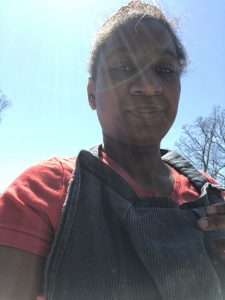These days, I am in and out of the shop making fresh soap batches to cure for Lady 5 & Dime. In between the batches, I am always eager to formulate new recipes and pair up some scent blends.
Most of the soaps you have come to enjoy from the shop are made by the cold processed soap method I have mastered over the years. Today, my soap batches turn out great void of damaging my equipment or myself. The cold processed, or CP method, takes advantage of the chemical reaction that occurs when mixing lye, water, and oils that naturally heats up and changes the mixture through the saponification phases. It takes 2-6 weeks to cure once completed and makes a nice creamy bar. But there were those times, early on, in my learning when the process didn’t go as planned.
As a new soaper, I had several disasters and messes in the shop. Two instances, in particular, come to mind. One such instance was when I ventured into the shop with a new recipe in hand and a goal to test out another soap making method, hot processed soap, or the HP method. Just like how our great-grandmothers used to make in the outside kettle over a fire. The HP method cuts the curing time down to mere days by applying heat to speed up the chemical reaction and saponification phases. The favorite heating option of many soapers is the good ‘ol crockpot. So, I found a nice crockpot at an estate sale, sanitized it, and got right to work on the soap batch.
Halfway through the process, the pot overflowed like a volcano. The soap volcano bubbled over the crockpot rim, all over the shop stove, down the stove side, and onto the floor. And it kept coming! At that moment, there was not much one can do other than unplug the crockpot and step back for the soap flow to stop. It was a mess that took a lot of time to clean up (wait for it to cool, harden, then scrap up) and mental backtrack to figure out what I did to cause the disaster (too large of recipe batch for the pot size).
As for the other time, let me say that it is not often that a soap disaster will run a soaper out the shop door. But when I was first dabbling in soap making, I learned some things the hard way. For instance, if the lye mix isn’t happy, then that is exactly what will make a soaper be on their toes!
 I was mixing a batch of cold processed soap and the recipe I was using wasn’t new. Once I added the oils to the water and lye mixture, the pot began to bubble, turn dark gray, and spew gas. The smell, well it wasn’t for breathing and made me run out of the shop only to turn back to see dark grey smoke billowing out the door and a hubby with a raised eyebrow. After a half-hour and the smoke cleared, I found a dark sludgy mess out and down the pot, all over the working area, and onto the floor. So what went wrong there? A rookie mistake. I realized I had grabbed an aluminum pot instead of one made of stainless steel I normally used. The lye recipe and aluminum are not a friendly mix leading to a large chemical reaction.
I was mixing a batch of cold processed soap and the recipe I was using wasn’t new. Once I added the oils to the water and lye mixture, the pot began to bubble, turn dark gray, and spew gas. The smell, well it wasn’t for breathing and made me run out of the shop only to turn back to see dark grey smoke billowing out the door and a hubby with a raised eyebrow. After a half-hour and the smoke cleared, I found a dark sludgy mess out and down the pot, all over the working area, and onto the floor. So what went wrong there? A rookie mistake. I realized I had grabbed an aluminum pot instead of one made of stainless steel I normally used. The lye recipe and aluminum are not a friendly mix leading to a large chemical reaction.
Lessons learned, good stories made, but overall, I was safe as I had donned safety glasses, gloves, and clothing that kept me from getting burned. And I ran like the dickens!! 😀
Keep working towards your goals & remember to laugh at yourself!
LaDonna G.
